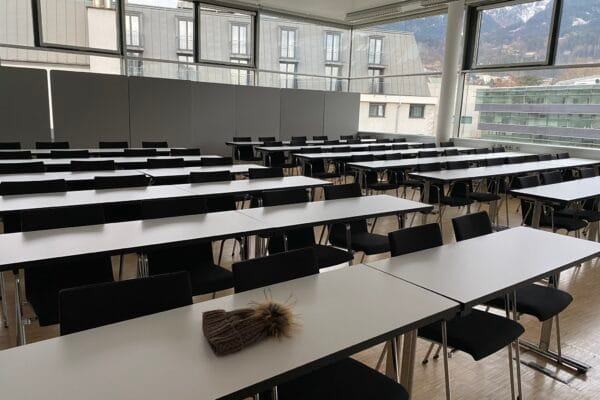
NAME:
MCI - Aula 301
BUILDING:
Management Center Innsbruck
FLOOR:
3
TYPE:
Lecture Room
CAPACITY:
66
ACCESS:
Only Participants
EQUIPMENT:
Blackboard, Beamer, Flipchart, PC, Sound System, WLAN (Eduroam), Handicapped Accessible
Glacier retreat is a striking symptom of global warming. All over the world, glaciers are retreating and exposing new areas for colonisation by living organisms, including plants and microorganisms. Microorganisms are among the first colonizer of deglaciated terrains and play an important role in soil development. Moreover, they play an important role in plant establishment, as numerous microbes have close interactions with plants, and perform different functions that can be positive (i.e. symbiotic) and/ or negative (i.e. pathogenic). However, we are lacking knowledge on the impact of glacier retreat on plant–microbe interactions and how networks assemble and develop following glacier retreat. Here, we assessed how plant and microbe diversity as well as their interaction networks respond to glacier retreat along a 140-years chronosequence (Mont Miné, Val d’Hérens, Switzerland). Using field survey and environmental DNA, we assessed the effects of plant succession on soil microbial communities at 3 different levels: patch, rhizosphere, and endosphere. Our results highlight the novel assembly and development of networks along the foreland influenced by interaction, rewiring from patch to rhizosphere and endosphere.

We and use cookies and other tracking technologies to improve your experience on our website. We may store and/or access information on a device and process personal data, such as your IP address and browsing data, for personalised advertising and content, advertising and content measurement, audience research and services development. Additionally, we may utilize precise geolocation data and identification through device scanning.
Please note that your consent will be valid across all our subdomains. You can change or withdraw your consent at any time by clicking the “Consent Preferences” button at the bottom of your screen. We respect your choices and are committed to providing you with a transparent and secure browsing experience.